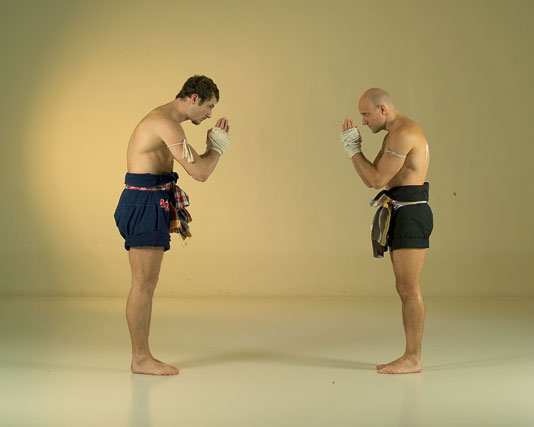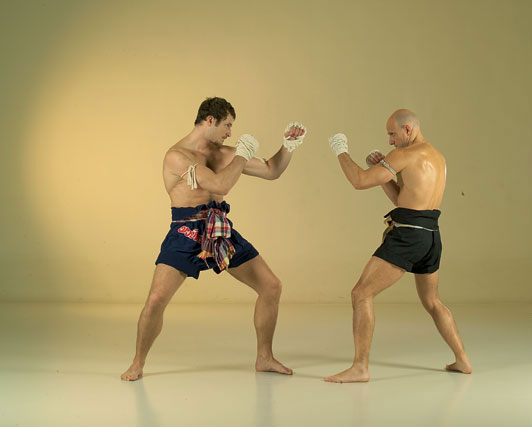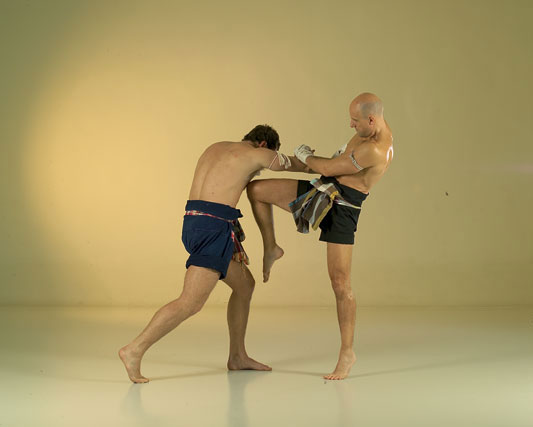The technical Forms, the real foundations of the
Martial Arts
by Marco De Cesaris
"What I like in Martial
Arts, what really excites me, is Movement: the aim of Movement that
is always abstract and purely spiritual and that is mixed with the moment’s
passion and emotion”
Yves Klein, Artist and Judo Master (1928-1962)
The sentence from the famous French artist, who died very young at the
age of 34, but still remembered today as one of the biggest European
painters from 900, as well as one of the deepest connoisseurs of Katas
from Judo Kodokan, offers us the occasion to look into the secret values
of modern practice of a Martial Art Codified Forms: the Forms as paradigm
of Martial Art, bearers of the own DNA from the disciplines transmitted
through them during centuries.
In an era, of spasmodic search for immediate results at any expense,
especially in sports, does it still have any sense to practice the traditional
Forms according to old criteria from tens of years ago?
What real benefits can be withdrawn, from a practice apparently far
away from the real combat context?
Is it still possible to claim that codified Forms should contain martial
"secrets", in an age when everything is available through
Internet?
As always, our analysis will come out from the field this article’s
author belongs to, which is exactly the empty handed Thai Martial Art,
named as Muay Boran.
Basically, the Muay traditional forms are practiced in two different
ways: the sequences in couples and the sequences without couple (partner)
In the first method, we find similarities "mutatis mutandis”
with the Katas from Judo.
In this type of performance, the followers carry out a series of attacks,
defenses and counterattacks, only by using the natural body weapons
(fists, elbows, knees, feet, tibias and head), alternating slow and
rhythmic movements with energy explosions, along with loud expirations.
In turn, the second method is comparable to the Karate Katas (and from
many other martial arts that follow an analogous system) and it focuses
on the execution of attack and defense movements’ series against
an imaginary adversary; also with an alternation of slow and fast rhythm.
In this case, the practitioner has to try to execute every action with
maximum fluency, combining the movements without solution of continuity
In both methods, the athletes who approach this practice seriously (not
in a occasional way), they go through several phases in time, all of
them with a high teaching value: in the basic phase or learning "a
mountain is a mountain" and every technique has to be practiced
a hundreds times, according to the exact typologies transmitted by the
master, without adding any external element to the original form. By
this way their "priming" is carried out in the body memory
what make that the own DNA of our Martial Art becomes an integral part
of our way of moving and reacting in front of combat situations. In
the Muay Boran field, this phase fits the learning of basic techniques
(Mae Mai) and advanced techniques (Look Mai) sequences, in the same
way they are transmitted by the main stylistic currents in Thailand.
In the second phase that we referred to as intermediate, the own instructor
has to favor the critical reading of formal techniques learned by the
students. Thanks to the long regular "mechanical" practice
performed in the first phase, they develop the right sensitivity to
be able to start reading between the lines from the rigid original coding.
In the case of Mae Mai and Look Mai sequences, is at this time when
the deep study and the practice of the so called "varying"
basic techniques intervene, such techniques were developed thanks to
the investigations of some Great Masters from ancient times. In this
critical phase when "a mountain is no longer a mountain",
the practitioners will face more and more complex combat situations,
by testing their own "priming", by personalizing, if necessary
and by keeping in their own technical baggage, those variations that
they find more suitable for their skills
In the most advanced phase of study, the circle is closed; the pupil
manages to assimilate the common elements to all versions of original
forms, by extending every technique to the universal combat principles.
In that phase, when once again "a mountain is simply a mountain",
each technical nuance and each basic principle from Mae Mai and Look
Mai in its multiple versions, are coherent with the fighting approach
transmitted throughout centuries by the Siamese masters. And the pupil
is capable of offering his partners what he has learned, entering by
his own right the Kru Muay group or Fighting Masters group.
As it has been said, the two practice methods of Muay forms help the
practitioners to develop the essential skills to improve effectiveness
in real combat: by regularly practicing with a training partner, the
Thai boxer increases a great deal both his own timing and his own sense
of distance in front of an opponent, that according to the practiced
form, he pursues him, he avoids him, he violently attacks with the arms
or the legs, he tries to grab him etc. Moreover, it also helps to deepen
the own knowledge of sensitive points, he learns how to attack them
and how to protect them. In the constant practice without training partner,
he learns to combine, in a fluid way, the offensive and defensive movements
with blows and stops or dodges, by perfecting the technique and at the
same time by improving the assaults speed, the dynamic balance and the
cardiovascular endurance. In addition, everyone knows that: a deep concentration
in solitary sequence practice can be compared to a real way of meditation
in movement, an element that characterizes the martial high-level exercise,
in all the eastern fighting disciplines.
It is just right here when the "martial" one becomes an "artist",
in the constant search of perfection of his own gesture, of the Movement
loved by the great Yves Klein, who understood the essence perfectly,
on this practice.


